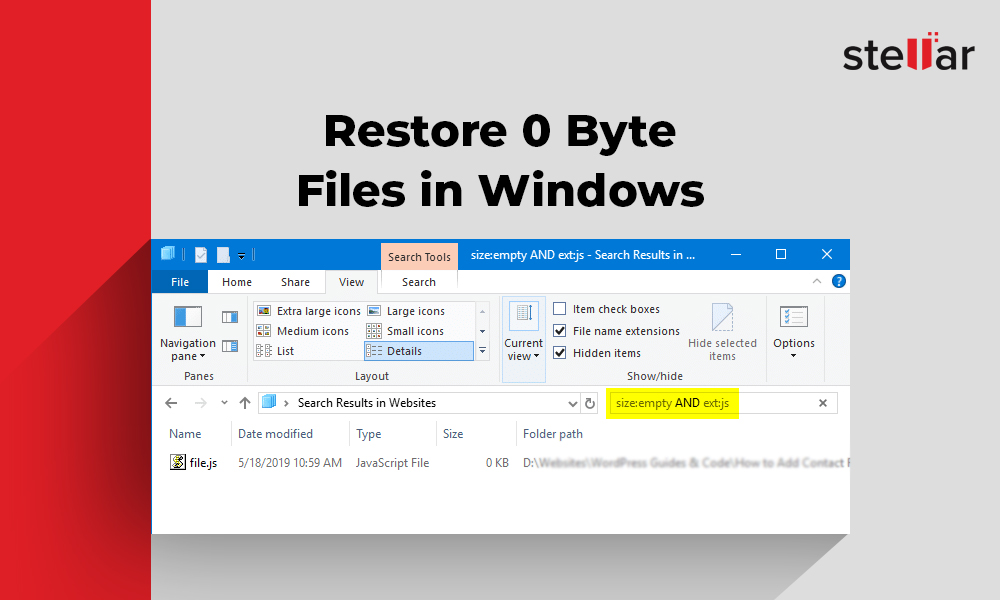
You can need it to create for example an additional swap or loop device or a virtual machine. Creating a virtual filesystemĪ virtual filesystem is a filesystem that exists in a file, which in turn exists on a physical disk.
#Unix command to list zero byte file iso
You can also need to create a backup iso image of a CD or DVD a. You can need to create a virtual filesystem on Linux for some reasons as creating a virtual machine on your Linux host. Creating virtual filesystem/Backup images of CD or DVDs as iso files Note that you will data added after the last compression backup operation. You can mount the restored disk to see the content. You need to first indicate the compressed file and the output file which is the disk compressed before. You will retrieve data that were present before the backup operation and not after the operation e. To restore, you need to inverse the input file with the output file indicated during backup operation as below. Save a disk or a partition helps to restore all the data, if there is any problem with our original drive. Or you can create a partition image as below # dd if=/dev/sda1 of=/tmp/sda1.img e. You must verify that the size of /dev/sdb1 should be larger than /dev/sda1. This will synchronize the partition /dev/sda1 to /dev/sdb1. You just need to indicate the partition name in input file as below # dd if=/dev/sda1 of=/dev/sdb1 bs=4096 conv=noerror,sync Instead of an entire disk, you can only backup a simple partition. Backup a partition or clone one partition to another The -c option writes output on standard output and keeps original files unchanged.ĭ. The pipe | operator makes the output on the left command become the input on the right command. You can decide to compress the disk image with the command below # dd if=/dev/vda | gzip -c >/tmp/ Creating a compressed disk imageīecause dd creates the exact content of an entire disk, it means that it takes too much size. Instead of /tmp/sdadisk.img, you could store it for example at /sdadisk.img if you want. You can store the output file where you want but you have to give a filename ending with.

Also, disk image makes the restoration much easier. Backing up a disk to an image will be faster than copying the exact data. You can create an image of a disk or a file image. The sync option allows to use synchronized I/O. The conv value parameter noerror allows the tool to continue to copy the data even though it encounters any errors. If you don't specify block size, dd use a default block size of 512 bytes. Make sure you use block sizes in multiples of 1024 bytes which is equal to 1KB. Here, if stands for input file, of stands for output file and bs stands for the block size (number of bytes to be read/write at a time). Otherwise, you get truncated and worthless partitions on the second one. This works only if the second device is as large as or larger than the first. So, this will clone the disk with the same data on the same partition. You need to indicate the block size to be copied at time with bs option. dd doesn’t know anything about the filesystem or partitions it will just copy everything from /dev/sda to /dev/sdb. You can copy all the data (entire disk) from the disk /dev/sda to /dev/sdb. Not a simple copy as cp command but a block size copy. It is possible to save all the data from an entire disk/partition to another disk/partition. Backing up and restoring an entire disk or a partition We will learn various options while going through dd command examples.

However, you can use it to clone a hard disk. The arguments to those options can be either files or block devices. I would, however, not recommend using dd to copy files because cp does that in a much simpler way. The basic use of the dd command is rather easy because it takes just two arguments: if= to specify the input file and of= to specify the output file. So, some people consider this tool as data destroyer.

You should be very careful while using this command as improper usage may cause huge data loss. Only the superuser can execute this command.


 0 kommentar(er)
0 kommentar(er)
